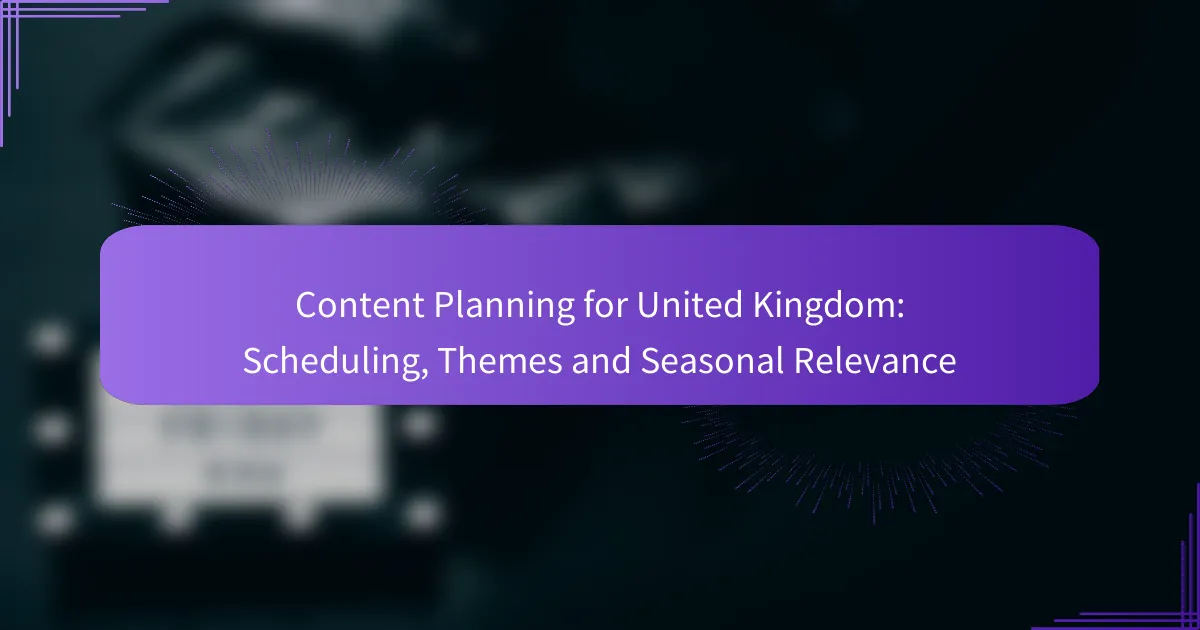Effective content planning for the UK market requires a strategic approach to scheduling that aligns with local trends, audience preferences, and significant dates. By focusing on themes that resonate with UK audiences and ensuring seasonal relevance, you can create engaging content that remains timely and relatable throughout the year.
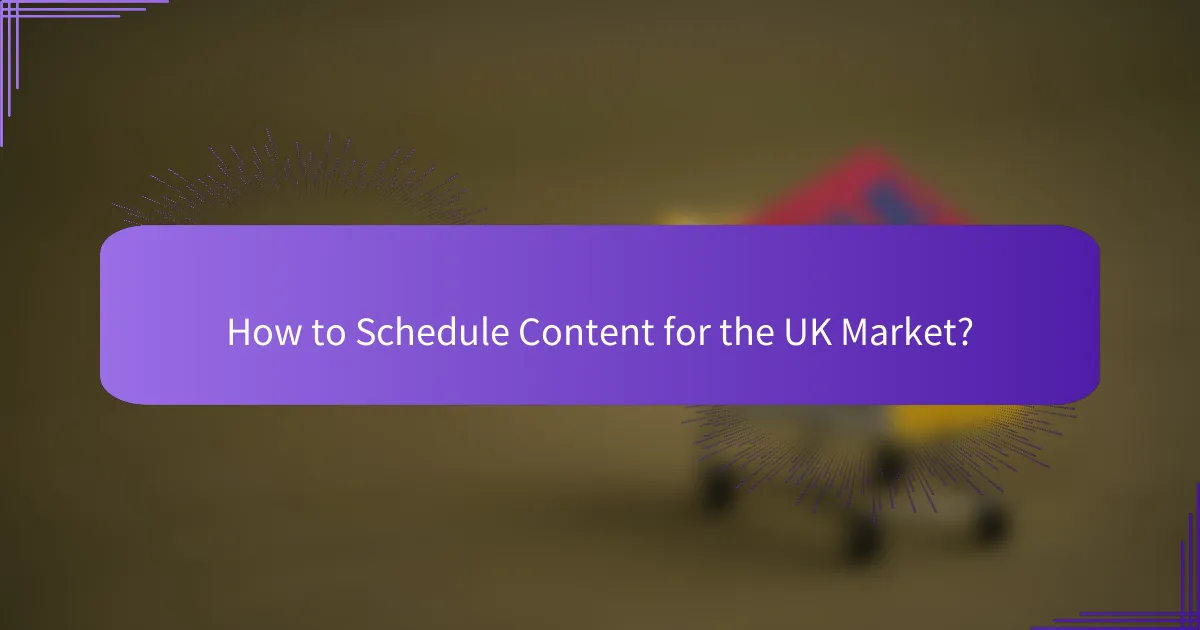
How to Schedule Content for the UK Market?
To effectively schedule content for the UK market, focus on aligning your publishing timeline with local trends, audience preferences, and significant dates. This approach ensures your content remains relevant and engaging throughout the year.
Use a Content Calendar
A content calendar is essential for organizing your content schedule. It allows you to plan topics, deadlines, and publication dates, ensuring a consistent flow of content. Consider using monthly or quarterly views to visualize your strategy effectively.
Include key elements such as content types, target audience, and promotional channels in your calendar. This will help you maintain clarity and focus on your content goals.
Incorporate Key Dates
Incorporating key dates like holidays, events, and seasonal trends is crucial for timely content. For instance, plan content around major UK holidays such as Christmas, Easter, and local festivals to capture audience interest.
Additionally, consider industry-specific dates, like product launches or trade shows, which can provide opportunities for targeted content that resonates with your audience.
Align with Audience Behavior
Understanding audience behavior is vital for effective content scheduling. Analyze when your target audience is most active online and tailor your publishing times accordingly. For example, weekends may see higher engagement for leisure content.
Utilize analytics tools to track audience interactions and adjust your schedule based on peak engagement times. This ensures your content reaches the right people at the right moment.
Utilize Scheduling Tools
Scheduling tools can streamline your content publishing process. Platforms like Buffer or Hootsuite allow you to automate posts across various channels, saving time and ensuring consistency.
Choose tools that offer analytics features to monitor performance, helping you refine your strategy over time. This can significantly enhance your content’s reach and effectiveness.
Monitor Performance Metrics
Regularly monitoring performance metrics is essential for assessing the success of your content schedule. Key metrics include engagement rates, click-through rates, and conversion rates, which provide insights into what works and what doesn’t.
Use this data to make informed adjustments to your content strategy. For instance, if certain topics or formats perform better, consider increasing their frequency in your schedule to maximize impact.
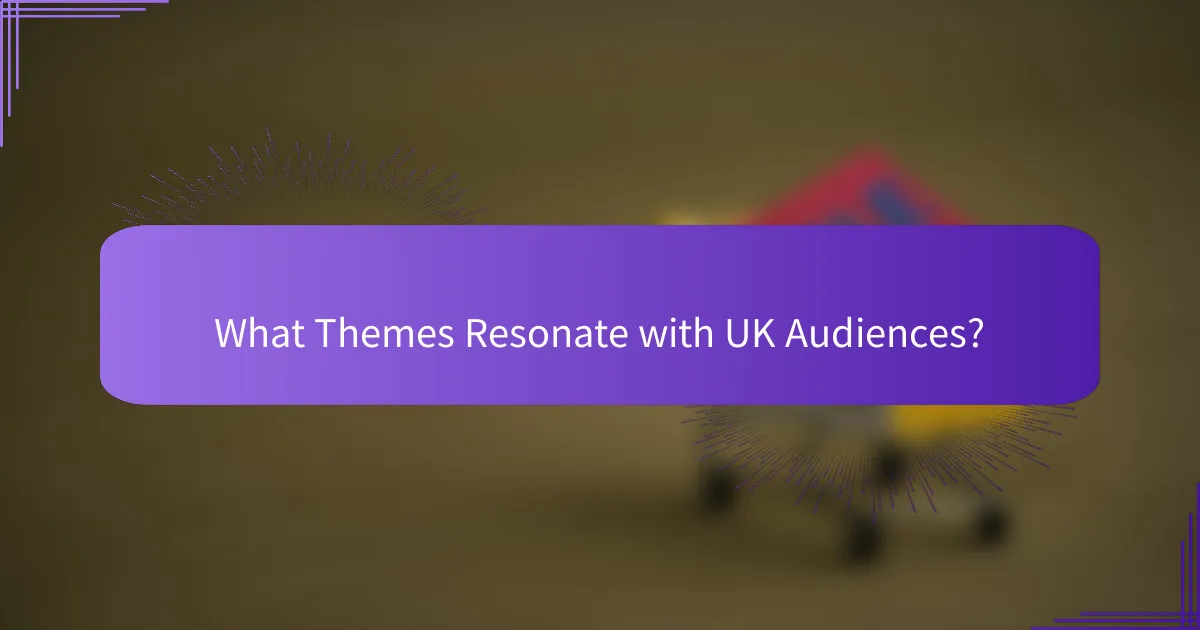
What Themes Resonate with UK Audiences?
Themes that resonate with UK audiences often reflect local culture, current trends, and seasonal events. Understanding these themes can enhance content relevance and engagement.
Local Cultural Events
Local cultural events play a significant role in shaping content themes in the UK. Events like the Notting Hill Carnival, Edinburgh Festival Fringe, and various music festivals attract large audiences and provide opportunities for themed content that resonates with local interests.
When planning content around these events, consider highlighting unique aspects, such as local artists, traditional foods, or community involvement. This approach not only engages audiences but also fosters a sense of belonging.
Trending Topics in the UK
Staying updated on trending topics is crucial for creating relevant content. Issues such as climate change, social justice, and technological advancements frequently dominate discussions in the UK, making them ideal themes for articles and posts.
Utilize social media platforms and news outlets to identify trending topics. Engaging with these discussions can enhance visibility and attract a wider audience, as people are often searching for content that reflects their current interests.
Seasonal Themes
Seasonal themes are essential for content planning, as they align with holidays and seasonal changes. Key periods include Christmas, Easter, and summer festivals, each offering unique opportunities for themed content.
For instance, during Christmas, content can focus on gift guides, festive recipes, or local events. Similarly, summer can highlight outdoor activities, travel tips, and seasonal recipes. Aligning content with these themes can increase engagement and relevance.
Industry-Specific Themes
Different industries have unique themes that resonate with their target audiences. For example, the fashion industry may focus on seasonal trends, while the technology sector might highlight innovations and product launches.
Understanding the specific interests and challenges of your industry can guide content creation. Tailoring themes to address these aspects not only attracts the right audience but also establishes authority within the niche.
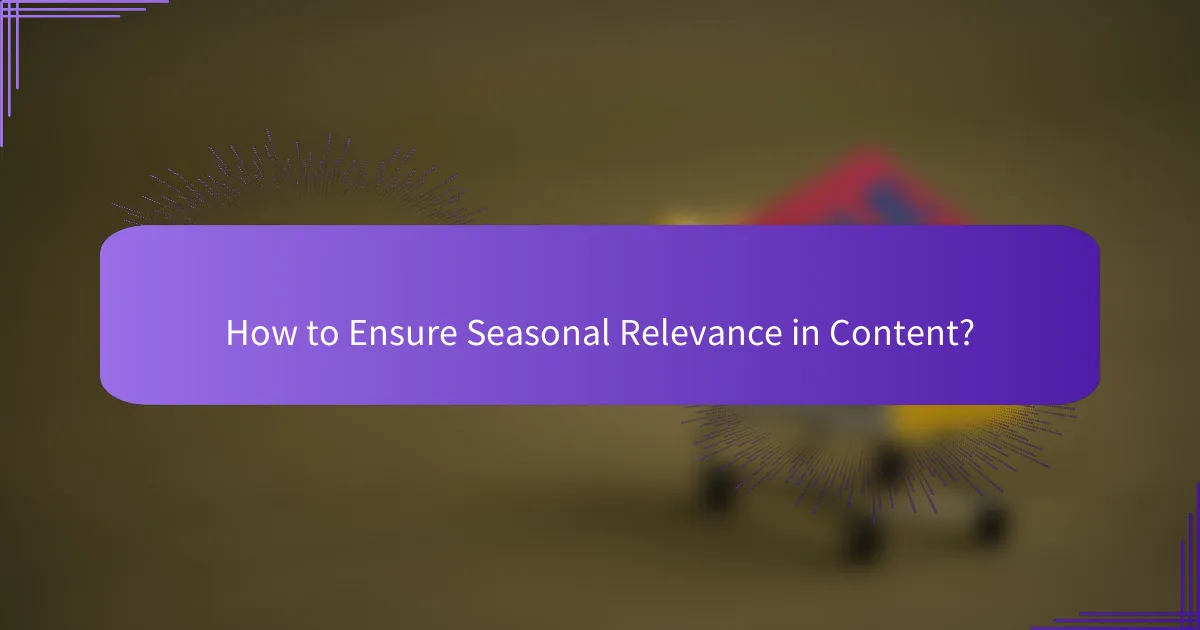
How to Ensure Seasonal Relevance in Content?
To ensure seasonal relevance in content, align your topics and themes with key dates and trends throughout the year. This approach helps engage your audience by providing timely and relatable material that resonates with their current interests.
Plan Around Holidays
Planning content around holidays is essential for capturing audience attention. In the UK, key holidays like Christmas, Easter, and Halloween present opportunities to create themed content that aligns with consumer behavior. For instance, consider crafting gift guides during the Christmas season or recipes for Easter celebrations.
Be mindful of the timing for each holiday. Start planning content at least a few weeks in advance to allow for proper promotion and engagement. This ensures your audience has time to discover and interact with your content before the holiday arrives.
Leverage Seasonal Trends
Seasonal trends can significantly influence content relevance. Monitor industry trends, social media discussions, and consumer behavior to identify what topics are gaining traction. For example, during summer, outdoor activities and travel-related content may be more appealing to your audience.
Utilize tools like Google Trends or social media analytics to track these seasonal shifts. Incorporating trending themes into your content strategy can enhance visibility and engagement, making your material more appealing during peak interest periods.
Analyze Past Seasonal Performance
Reviewing past seasonal performance helps refine future content strategies. Analyze metrics such as engagement rates, traffic sources, and conversion rates from previous years to identify what worked well and what didn’t. This data can guide your planning for upcoming seasons.
Consider creating a performance report that highlights successful content pieces and areas for improvement. Use this information to adjust your themes and scheduling, ensuring that your future content remains relevant and impactful during seasonal peaks.
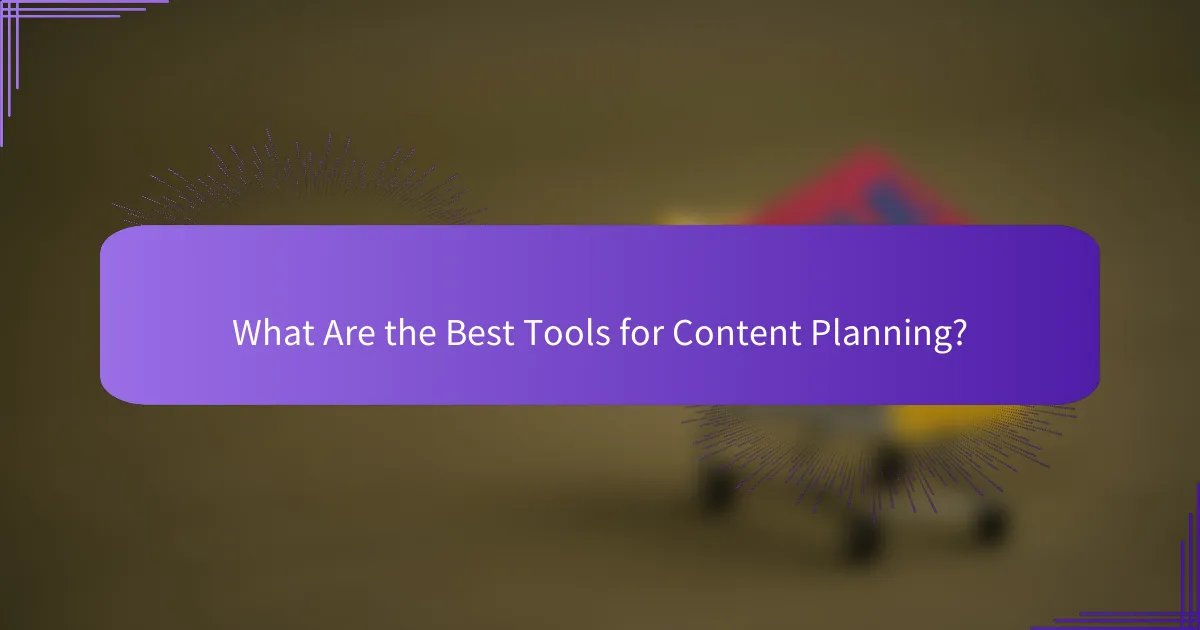
What Are the Best Tools for Content Planning?
The best tools for content planning help streamline the process of scheduling, organizing themes, and ensuring seasonal relevance. Effective tools can enhance collaboration, improve scheduling accuracy, and optimize content delivery across various platforms.
Trello for Collaboration
Trello is a visual project management tool that facilitates collaboration among team members. It uses boards, lists, and cards to organize tasks, making it easy to track progress and assign responsibilities.
To maximize Trello’s effectiveness, create boards for different content themes or campaigns. Use labels and due dates to prioritize tasks and ensure everyone is aligned on deadlines. Regularly review and update the boards to maintain momentum.
Google Calendar for Scheduling
Google Calendar is an essential tool for scheduling content publication and planning meetings. It allows users to create events, set reminders, and share calendars with team members, ensuring everyone stays informed about important dates.
Utilize color coding to differentiate between content types or campaigns. Set recurring events for regular content updates and use the “Goals” feature to allocate time for content creation. This helps maintain a consistent publishing schedule.
CoSchedule for Optimization
CoSchedule is a comprehensive marketing calendar that integrates with various platforms to optimize content planning. It helps manage social media posts, blog content, and email campaigns all in one place.
Leverage CoSchedule’s analytics to track performance and adjust your strategy based on audience engagement. Use its headline analyzer to craft compelling titles that attract clicks. Regularly review your content calendar to ensure alignment with seasonal trends and themes.
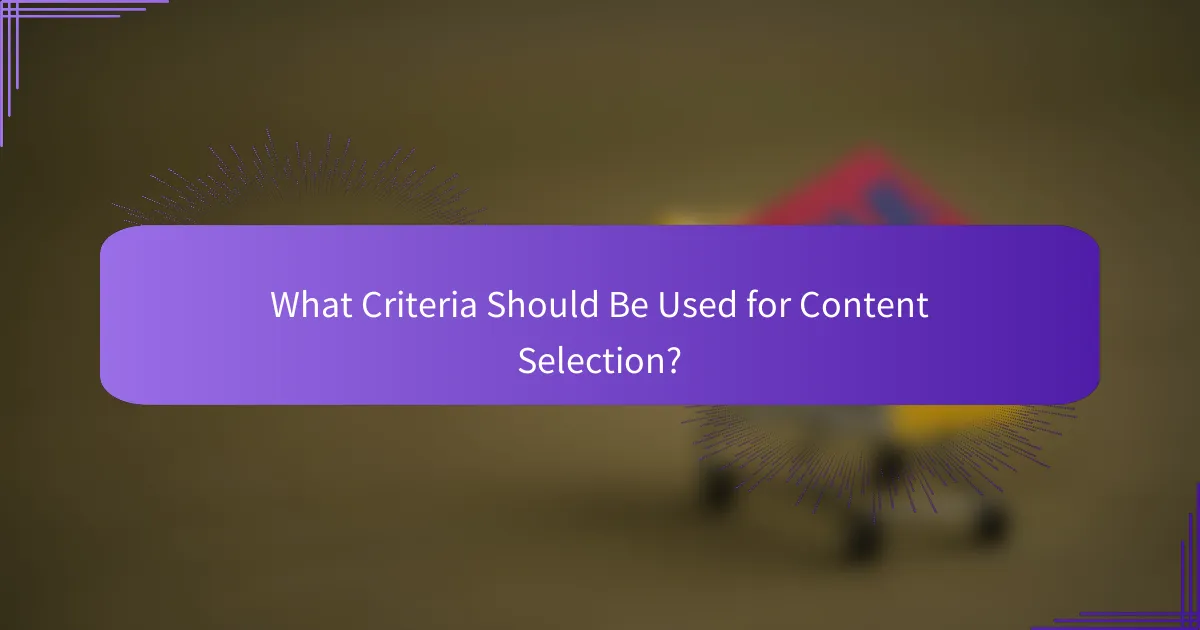
What Criteria Should Be Used for Content Selection?
Content selection should be guided by relevance, audience engagement, and seasonal trends. Prioritizing these criteria ensures that the content resonates with the target audience and aligns with current interests and events.
Audience Preferences
Understanding audience preferences is crucial for effective content planning. This involves researching what topics, formats, and styles resonate most with your target demographic in the UK. Surveys, social media insights, and analytics can provide valuable data on audience interests.
Consider segmenting your audience based on demographics, such as age, location, and interests. Tailoring content to these segments can enhance engagement. For example, younger audiences may prefer interactive content like quizzes, while older demographics might favor in-depth articles or videos.
Regularly review audience feedback and engagement metrics to refine your content strategy. This iterative approach helps ensure that your content remains relevant and appealing, adapting to shifts in audience preferences over time.
